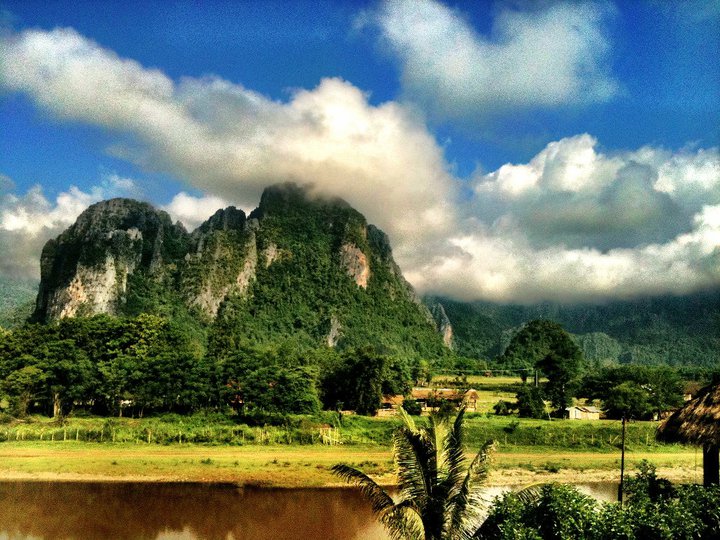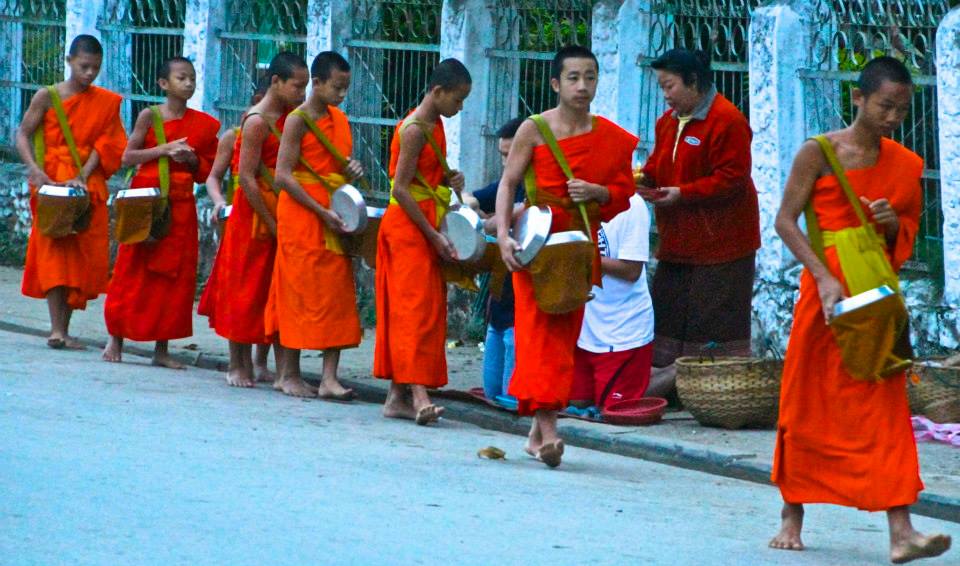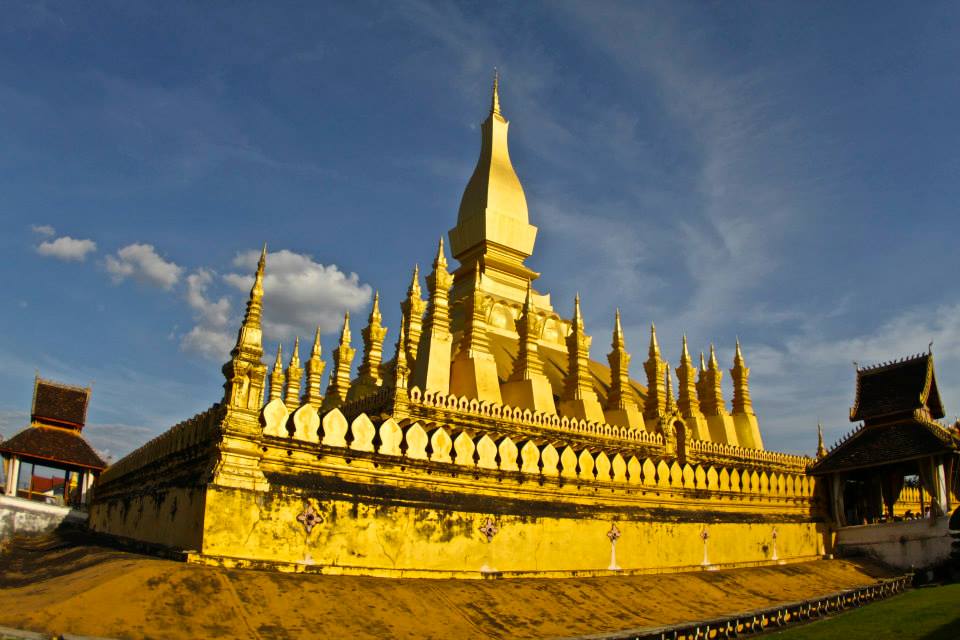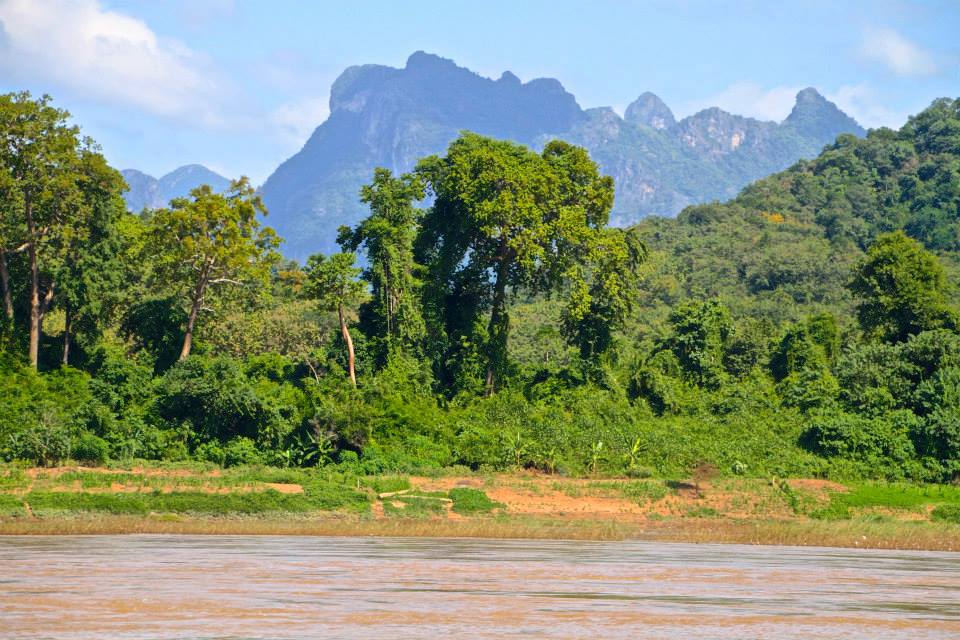Southeast Asian nation of Laos is renowned for its breath-taking natural scenery, vibrant culture, and gracious people. Laos offers tourists the chance to discover quaint towns and villages, historic temples, and bustling marketplaces while also getting a taste of local culture.
Luang Prabang, a UNESCO World Heritage site renowned for its historic temples, French colonial architecture, and breath-taking natural surroundings, is one of the most well-liked travel destinations in Laos. Visitors can tour the town’s historic sites, travel down the Mekong River by boat, and eat delectable regional fare.
Vang Vieng, a lovely village tucked away among tall limestone cliffs and rice terraces, is another must-see location in Laos. The Nam Song River can be tubing down, adjacent caves and waterfalls may be explored, and from the top of the town’s famous overlooks, visitors can enjoy the breathtaking views.
The Bolaven Plateau, well-known for its coffee plantations and waterfalls, the Plain of Jars, the picturesque capital city of Vientiane, the Kong Lor Cave, and other attractions are some of Laos’ further highlights.
Laos has plenty to offer every traveller, whether they are seeking excitement, culture, or tranquilly. Laos is a place not to be missed, with its beautiful landscapes, gracious hospitality, and distinctive culture. In this article, we will explore what you should do and see when you visit Laos.
Visit Luang Prabang
Northern Laos’ picturesque city of Luang Prabang is renowned for its exquisite temples, ancient architecture, and breath-taking scenery. Travelers to Laos frequently visit the city, which is a UNESCO World Heritage site.
The Royal Palace Museum, which formerly served as the royal family of Laos’ home, is one of Luang Prabang’s most popular attractions. The many rooms of the palace are open to visitors who want to learn more about the history and culture of the nation. The Wat Xieng Thong temple, one of the most important in Laos and featuring gorgeous architecture and elaborate sculptures, is another must-see attraction in Luang Prabang.
A fantastic starting point for visiting the region is Luang Prabang. Visitors can climb to waterfalls, take a boat cruise on the Mekong River to see surrounding towns, or join a guided tour to see the traditional customs of northern Laos.
Explore Vientiane
The bustling metropolis of Vientiane, the capital of Laos, attracts tourists with a distinctive fusion of traditional culture and contemporary conveniences. In addition to vibrant marketplaces and eateries, the city is home to numerous stunning temples and museums.
The Buddha Park, a popular tourist destination in Vientiane, is just outside the city and is home to numerous exquisite Hindu and Buddhist monuments. The COPE Visitor Centre, which offers visitors a sobering view at the legacy of explosive ordnance left behind by the Vietnam War, is another important site in Vientiane.
The city’s numerous temples and museums can also be explored, including the Wat Si Saket temple, one of Vientiane’s oldest temples and home to stunning sculptures and murals. Another well-liked destination that gives tourists a comprehensive look at the history and culture of the nation is the Lao National Museum.
Trek Luang Namtha
Northern Laos’ region of Luang Namtha is renowned for its breath-taking natural beauty and wide variety of ethnic cultures. The area is well-known for trekking, outdoor recreation, and opportunities for cultural immersion.
To explore rural villages and learn about conventional farming and weaving techniques, tourists can go on guided forest hikes. Numerous diverse ethnic groups, including the Hmong, Akha, and Tai Lue, all of which have their own distinctive traditions and customs, call this region home.
The Nam Ha National Protected region, a sizable wilderness region with numerous hiking paths, waterfalls, and wildlife, is located in Luang Namtha. Visitors can go on guided walks through the park or go kayaking along the Nam Tha
Relax in Vang Vieng
Between Vientiane and Luang Prabang is the little Laotian town of Vang Vieng. It has grown to be a well-liked resort for backpackers and tourists seeking to unwind and take in Laos’ amazing natural beauty because of its stunning limestone mountains and picturesque surroundings.
The finest thing to do in Vang Vieng is to unwind and enjoy the breath-taking views of the mountains in the area. Additionally, visitors can take a tubing trip down the Nam Song River, which flows through the town and offers a distinctive viewpoint of the surrounding landscape. Kayaking, hot air ballooning, and rock climbing are some further local activities.
Numerous caves can be found in Vang Vieng, many of which are open to tourists. A well-liked alternative is the Tham Chang Cave, which has a natural swimming pool inside. Other cultural landmarks and temples can be found nearby, including Wat Si Souman.
In general, Vang Vieng is the ideal location for people seeking to unwind and take in Laos’ natural beauty.
Take a Boat Ride on the Mekong River
One of the most well-liked activities for visitors to Laos is taking a boat ride on the Mekong River. The country traversed by a river, which offers a singular perspective of Laos’s landscape and native culture.
One well-liked way to get to the Pak Ou Caves, where visitors may see hundreds of Buddhist statues and artefacts, is to take a boat journey from the city of Luang Prabang. Travellers may enjoy the breath-taking landscape of the river and the surrounding mountains as they proceed.
Another choice is to take a multi-day boat excursion along the Mekong River, which gives tourists the chance to view locations that are more secluded and get a taste of traditional Lao culture. This can involve going to historical temples, neighbourhood markets, and traditional villages.
A boat ride is a fantastic way to see Laos’ natural beauty and culture from a different angle, whether it is a quick trip to the Pak Ou Caves or a longer trip along the Mekong River.
If you would like to book a boat ride tour on the Mekong River, click here or on the Get Your Guide image below to select from one of our preferred suppliers.
Visit the Plain of Jars
In the heart of Laos, there is an extraordinary and enigmatic archaeological site called The Plain of Jars. Thousands of enormous stone jars, some weighing as much as several tonnes found here dispersed across a broad plain. Although their use in rituals and burials by the prehistoric inhabitants of the region fully understood, thought that these jars served that purpose.
The Plain of Jars can be toured on foot by following hiking trails that snake through its hills and valleys. Over the years, some of the jars have been broken or destroyed, but many are still in place and offer an incredible look into Laos’ prehistoric past.
Other historical sites and archaeological sites, such as old temples and fortresses, can be found in the area in addition to the jars themselves. For anyone with an interest in history or archaeology, The Plain of Jars is a must-visit location. It provides a singular viewpoint on the rich culture and heritage of Laos.
Take a Cooking Class
A fantastic approach to learn about Laos’s regional culture and food is to take a cooking lesson. Cities like Luang Prabang and Vientiane offer a variety of cooking classes that often start with a trip to the neighborhood market to acquire fresh ingredients and end with a practical cooking instruction.
A spicy minced beef salad called laap, a noodle soup called khao soi, and a spicy papaya salad called tam mak hoong are just a few of the traditional foods that participants in the culinary class will learn how to prepare. The lesson usually ends with a dinner where students can eat the food they made.
Laos offers cooking classes that not only teach tourists how to prepare delectable meals but also give them a glimpse into the history and culture of the nation. Participants will gain knowledge about regional ingredients, cooking methods, and the significance of food in Lao culture.
Overall, learning to cook in Laos is a pleasant and instructive way to get to know the people and food of the nation.
If you would like to book a cooking class in Laos, click here or on the Klook image below to select from one of our preferred suppliers.
Visit the Kong Lor Cave
Central Laos is home to the magnificent natural wonder known as Kong Lor Cave. The cave, which is nearly 7 kilometres long and has a river running through it, has a stunning panorama of stalactites and stalagmites underground.
By taking a boat journey across the river and through the cave’s congested passageways and brightly lit caverns, visitors can explore the cave at their leisure. Visitors can have a one-of-a-kind and spectacular experience during the 2-hour boat cruise.
Visitors will pass by several intriguing limestone cliffs and rock formations along the way, in addition to an underground waterfall. Fish, bats, and spiders are just a few of the animals that call the cave home; throughout their trek, tourists might be lucky enough to see some of these critters.
Anyone visiting Laos should stop at the Kong Lor Cave, which provides an amazing look at the country’s natural wonder. The cave is the ideal destination for individuals looking for both adventure and relaxation because it is situated in a tranquil and remote area of the nation.
Bolaven Plateau
Beautiful southern Laos’ Bolaven Plateau is home to coffee farms, tumbling waterfalls, and dense woods. The plateau is a great place to escape the heat and humidity because it is cooler than the nearby lowlands at an altitude of around 1,000 metres above sea level.
The Bolaven Plateau offers tourists the chance to stroll through picturesque villages, go on jungle hikes in search of secret waterfalls, and savour some of the best coffee in the world. Numerous ethnic minorities, including the Laven, Alak, and Katu, who each have their own distinctive customs and traditions, call this region home.
The Tad Fane and Tad Lo waterfalls, the Paksong and Sekong coffee plantations, and the traditional Laven villages are just a few of the features of the Bolaven Plateau. In the nearby hills, visitors can go hiking or mountain biking while taking in the breath-taking panoramic views.
Overall, the Bolaven Plateau is a must-see location for everyone visiting southern Laos because it offers the ideal fusion of scenic beauty, rich cultural history, and exquisite coffee.
Festivals in Laos
Laos, a landlocked nation in Southeast Asia, has a rich tapestry of celebrations that intricately woven with animist traditions, Buddhist mysticism, and a strong feeling of community. These festivities provide a special window into the culture and way of life of the country.
Boun Pi Mai, the Lao New Year, which observed in April, is one of the most important celebrations. Water fights, trips to the temple, and the customary cleaning of Buddha statues, which represents cleanliness and rejuvenation, all serve to celebrate the occasion. With colourful decorations and boisterous processions, the nation comes to life.
The Rocket Festival, also known as Boun Bang Fai, is an enthusiastic occasion that takes place before to the rainy season and involves the launch of handcrafted bamboo rockets into the sky. It is evidence of Laotians’ ties to agriculture and their faith in the ability of rain to provide a bountiful harvest.
Longboats with extravagant decorations compete for triumph in the exhilarating Boat Racing Festival, which hosted in Vientiane and other Mekong River towns. It honours both the value of waterways and the nation’s royal past.
In Laos, the ancestral spirits and the spirits of the land honored throughout many festivals. In Loei Province, colorful masks and costumes worn during the Phi Ta Khon Festival in an effort to please the spirits and bring good fortune.
These Laotian festivals provide inhabitants and visitors with a unique cultural experience by displaying the country’s enduring traditions, sense of community, and strong relationship with nature.



















